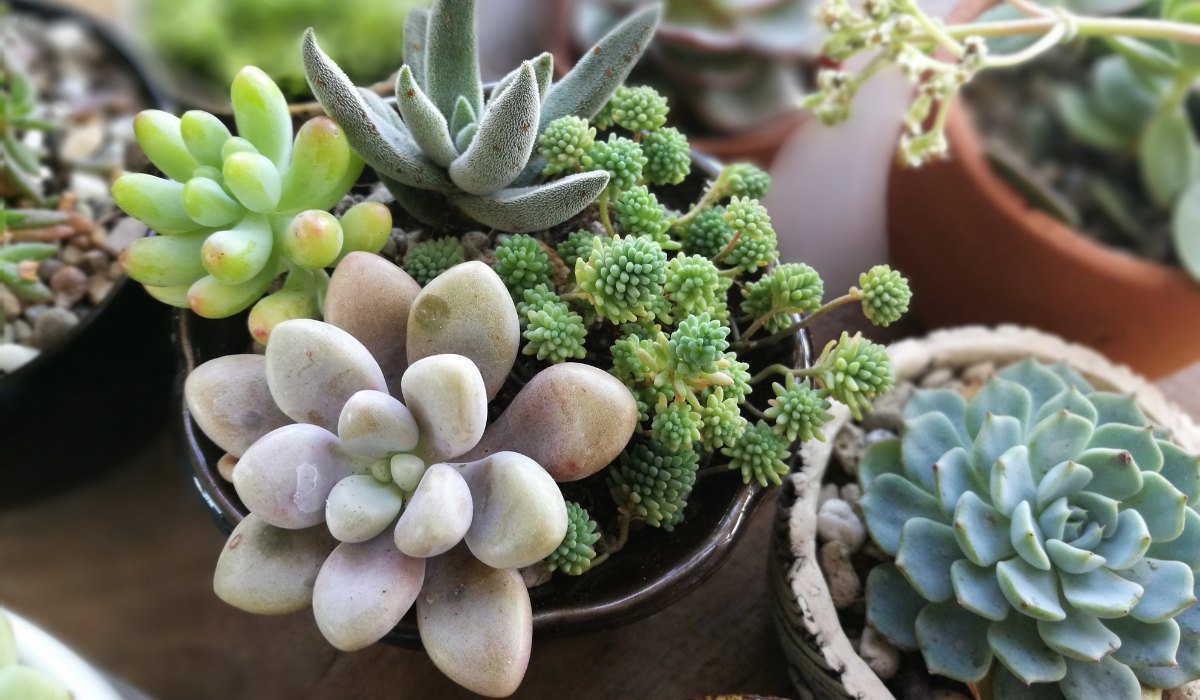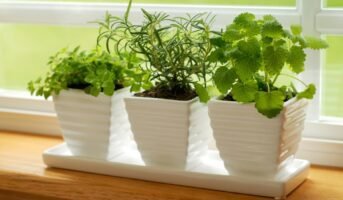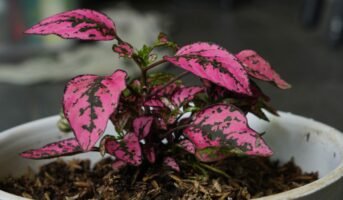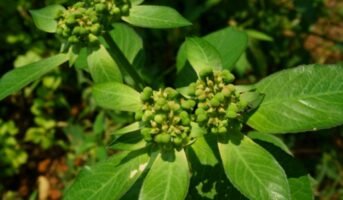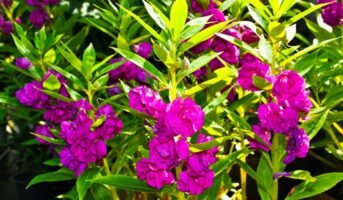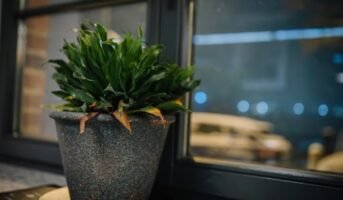Succulent plants are considered excellent indoor plants due to their low maintenance. They offer a diverse world of colour, texture and life. They can thrive in a variety of indoor conditions, making them a favourite among beginners. This guide delves into various succulent types, provides essential care tips and explores their numerous benefits.
See also: Indoor plants that grow well with low sunlight
What are succulent plants?
The plant’s name comes from the Latin word succus, which means ‘liquid or sap’. True to its name, succulent plants boast of fleshy leaves or stems that store water. Due to this storage mechanism, the plants can survive in hot and dry environments. Low-maintenance and attractive, these plants are available in a wide variety of shapes, sizes and colours. Due to their minimal care requirement, succulents are commonly used to adorn indoor and outdoor settings.
Succulent plant: Key facts
| Common name | Succulents |
| Native | South Africa. It can grow on every continent except Antarctica. |
| Climate | 48-50 degrees Celsius |
| Temperature | Temperate climate |
| Soil | Good drainage soil |
| Sunlight | A few hours of sun a day |
| Propagation | By leaf or stem cuttings |
| Maintenance | Low maintenance |
| Toxicity | Most succulents are not toxic |
Succulent plants: Varieties
Here is a list of some of the most popular succulent plant varieties grown in homes.
Aloe vera
Aloe vera is a well-known succulent with soothing properties for sunburn relief and skincare. It requires bright, indirect light and well-draining soil. Water it moderately, allowing the soil to dry between waterings.
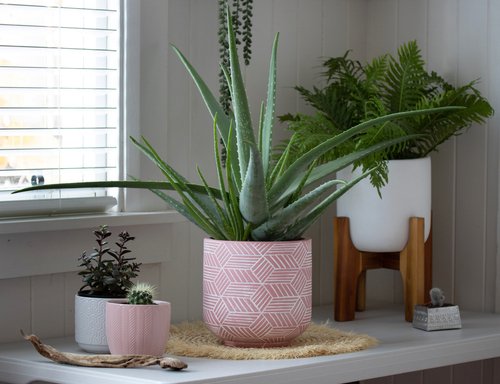
Echeveria
These rosette-shaped succulents come in various colours and are popular for their decorative appeal. They thrive in well-draining soil, bright sunlight and occasional watering.
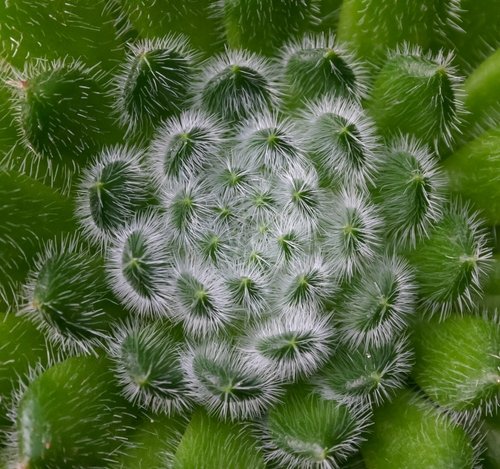
Haworthia
Characterised by their small, spiky leaves, Haworthias are low-maintenance succulents perfect for indoor settings. They prefer bright, indirect light and infrequent watering.
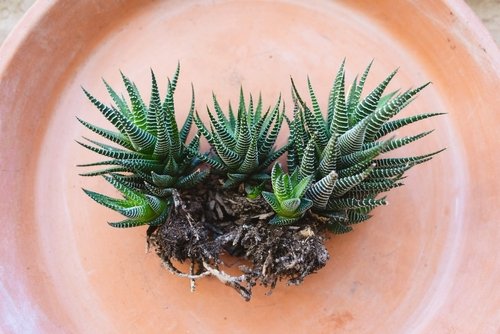
Jade plant (Crassula ovata)
Also known as the money plant, Jade is a classic choice for beginners. It has thick, fleshy leaves and requires well-draining soil and moderate sunlight.
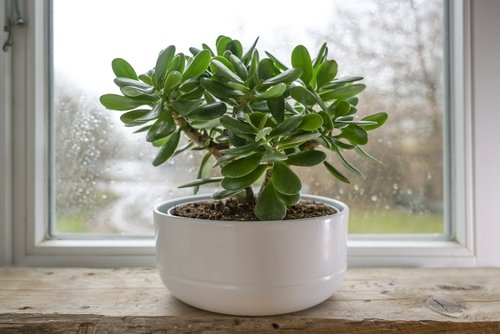
Sedum
With a diverse range of varieties, Sedums are easy-to-grow succulents. They prefer bright light and well-draining soil, making them suitable for gardens and containers.

String of pearls (Senecio rowleyanus)
This unique succulent features trailing stems adorned with small bead-like leaves resembling pearls. It thrives in bright, indirect light and needs infrequent watering.
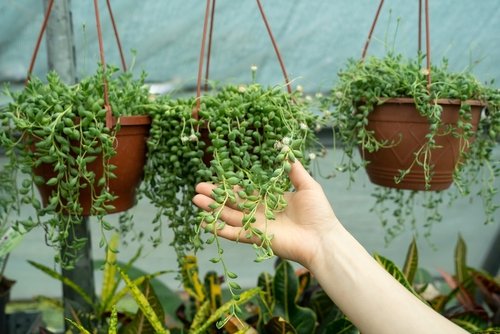
Cactus
Known for their iconic spines, cacti come in various shapes and sizes. They are hardy, drought-tolerant plants that require plenty of sunlight and well-draining soil.
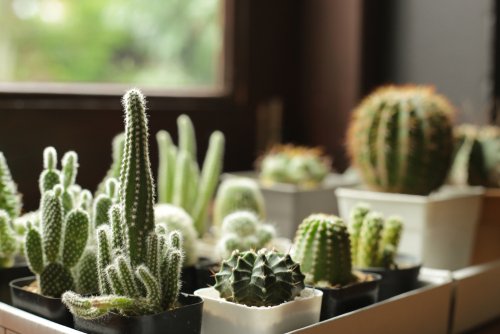
Agave
These striking succulents have architectural appeal and require full sun and well-draining soil. They are low-maintenance but need space due to their eventual size.
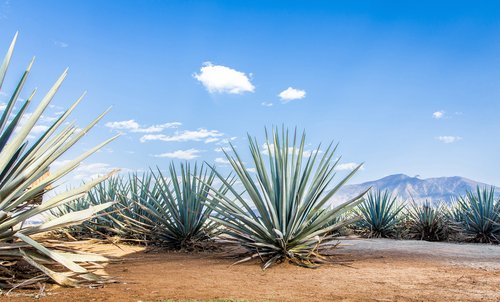
Kalanchoe
Known for their vibrant, long-lasting flowers, Kalanchoes are easy-to-care-for succulents. They prefer bright light and moderate watering.

Sempervivum
Also called ‘hens and chicks’, Sempervivums form rosettes and produce smaller offsets around the mother plant. They thrive in well-draining soil and bright light.
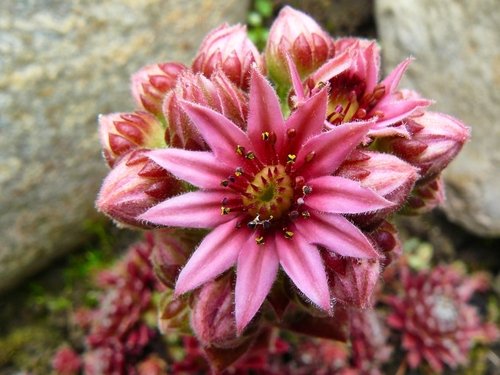
Snake plant (Sansevieria)
Snake plants are popular for their air-purifying abilities and resilience. They tolerate low light and can survive with infrequent watering, making them great indoor plants.
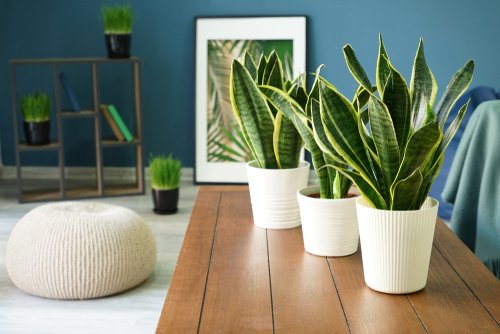
Artillery Plant (Tillandsia cyanea)

Source: Pinterest/filles de l’air création
This air plant stands out with its striking pink flower bracts and blue flowers. Native to the rainforests of Ecuador, it thrives in bright, indirect light and high humidity. Its name comes from the way its seed pods burst open, resembling artillery fire.
Bear Claw Cotyledon (Cotyledon macracantha)

Source: Pinterest/ Etsy
Resembling bear claws, this plant features chubby leaves with a distinct red edge. Originating in South Africa, it enjoys bright light and well-drained soil. In spring, it blooms with bell-shaped, orange flowers.
Bishop’s Cap (Astrophytum asterias)

Source: Pinterest/ Etsy
A star-shaped cactus, Bishop’s Cap lacks spines, offering a smooth, green surface with white dots. Native to Texas and Mexico, it thrives in full sun and dry conditions. Yellow flowers appear atop the cactus in summer.
Black Aeonium (Aeonium arboreum ‘Zwartkop’)

Source: Pinterest/ Etsy
Known for its dark purple, almost black leaves, this succulent forms rosettes on woody stems. It prefers cooler temperatures and partial sun. When in bloom, it showcases bright yellow flowers.
Blue Chalk Sticks (Curio repens)

Source: Pinterest/ Etsy
With long, blue-green, finger-like leaves, this groundcover succulent is perfect for adding texture. Originating in South Africa, it enjoys full sun and well-drained soil. Yellow flowers may appear in summer.
Blue Pimpernel (Morina penstemonoides)

Source: Pinterest/ Flickr
This rare succulent has striking blue leaves and thrives in rocky, well-drained soil. It’s native to the Himalayas and prefers cooler temperatures. Small, white flowers bloom in spring.
Burro’s Tail (Sedum morganianum)

Source: Pinterest/ Etsy
Known for its long, trailing stems covered in plump, green leaves, it’s perfect for hanging baskets. Native to Honduras and Mexico, it requires bright light and infrequent watering. Pink or red flowers may bloom in summer.
Chinese Jade (Crassula ovata)

Source: Pinterest/ Etsy
A popular houseplant, it features thick, shiny, jade-green leaves. Native to South Africa, it’s known for its ease of care. White or pink flowers may bloom under the right conditions.
Crown of Thorns (Euphorbia milii)

Source: Pinterest/ Etsy
A thorny, woody succulent with small, bright flowers. Originating in Madagascar, it can tolerate a range of light conditions. Its flowers, in shades of red, pink, or yellow, bloom year-round.
Dolphin String of Pearls (Senecio delphiniifolius)

Source: Pinterest/ Etsy
Known for its unique, dolphin-shaped leaves, this trailing succulent is perfect for hanging planters. It enjoys bright, indirect light and occasional watering. It can produce tiny, white flowers with a cinnamon scent.
Fairy Crassula (Crassula ovata ‘Gollum’)

Source: Pinterest/ Etsy
The Fairy Crassula is a whimsical plant, boasting tubular green leaves with a reddish tint. Its distinctive shape resembles coral from a fantastical underwater world. This plant thrives in bright light and requires minimal watering, making it perfect for beginners.
Finger Jade (Crassula ovata ‘Skinny Fingers’)

Source: Pinterest/ Etsy
Resembling green, elongated fingers reaching skyward, the Finger Jade is a sight to behold. It’s a hardy plant, tolerating various light conditions. When exposed to sunlight, the tips of its fingers blush with a hint of red, adding to its appeal.
Ghost Echeveria (Echeveria pallida)

Source: Pinterest/ Etsy
Ghost Echeveria captures attention with its pale, almost translucent leaves. These leaves form a rosette, giving it an elegant, ghostly appearance. This plant prefers partial sunlight and well-drained soil, making it a superb choice for indoor gardens.
Graptopetalum Paraguayense

Source: Pinterest/ Etsy
This succulent, also known as “Mother of Pearl,” flaunts rosettes of silvery-blue leaves. Its leaves turn pinkish in full sun, adding a splash of colour to your succulent collection. It’s drought-tolerant and thrives in well-draining soil.
Greenovia Dodworthii

Source: Pinterest/aSucculent.com
Resembling a rose, Greenovia Dodworthii charms with its tightly packed green leaves. It’s perfect for adding a touch of romance to your plant collection. This plant prefers cooler temperatures and indirect light.
Jelly Bean Plant (Sedum pachyclados)

Source: Pinterest/ Etsy
This playful plant features chubby, bean-like leaves in shades of green. When stressed, the tips turn a delightful red. It’s a hardy plant, ideal for hanging baskets or as ground cover in rock gardens.
Living Stones (Pleiospilos nelii)

Source: Pinterest/ Amazon
With a striking resemblance to pebbles, Living Stones are a quirky addition to any succulent garden. These plants blend in with their surroundings, making them a unique conversation starter. They require minimal watering and love bright light.
Miniature Jade (Crassula ovata ‘Minima’)

Source: Pinterest/ Etsy
This compact version of the classic Jade plant fits perfectly on small shelves or desks. Its tiny, glossy leaves are a deep green, often with red edges. It’s drought-tolerant and thrives in bright, indirect light.
Panda Plant (Kalanchoe tomentosa)

Source: Pinterest/Succulent City
The Panda Plant stands out with its fuzzy, silver-green leaves edged in brown. It’s as soft as it is striking. This low-maintenance plant prefers bright, indirect light and infrequent watering.
Pincushion Haworthia (Haworthia coarctata)

Source: Pinterest/aSucculent.com
With its dense, green leaves stacked in a columnar form, the Pincushion Haworthia is a marvel. Each leaf is adorned with white bumps, giving it a textured look. It’s a small, slow-growing plant, perfect for windowsills. This succulent thrives in partial shade and needs minimal watering.
How to grow and care for succulents?
- Propagation: Succulents can be propagated through stem or leaf cuttings.
- Soil: Succulents require well-drained soil. Use a well-draining potting mix or add perlite or sand to the soil to improve drainage.
- Container: Choose a container with drainage holes. Avoid large and deep containers since they can lead to overwatering.
- Sunlight: These plants need bright, direct or indirect, If you are growing them indoors, place them near a window that receives at least 6 hours of bright, indirect light every day.
- Watering: Succulents need infrequent watering. In fact, overwatering can cause root rot and other issues.
Succulent plants: Fun facts
- Approximately one-third of all succulent species are found in South Africa.
- Succulents can be found on every continent except Antarctica.
- Some succulent plants, such as Agave, are used to make tequila and other alcoholic beverages.
- Cacti are a type of succulent but not all succulents are cacti.
- A Sempervivum plant went without water for 10 years. It is a world record for a succulent surviving without water.
Are succulents toxic?
Kalanchoe and Euphorbia are the two varieties of succulents that could be harmful if ingested. However, the majority of succulents are non-toxic to animals. In fact, most animals naturally steer clear of succulent plants.
FAQs
How often should I water my succulent plants?
Succulent plants should be watered when the soil is completely dry. This may happen once a week or every few weeks, depending on the plant and the growing conditions.
Can succulent plants grow indoors?
Yes, succulent plants can grow indoors as long as they receive enough bright, indirect light. Certain plants, such as the Snake Plant, can withstand low-light conditions.
Do succulent plants need fertiliser?
Succulent plants do not require frequent fertilisation. However, use a fertiliser specifically formulated for cacti and succulent plants during the growing season.
What is the best soil for succulent plants?
The best soil for succulent plants is a well-draining potting mix that allows excess water to drain. You can create your mix by mixing potting soil with sand, perlite or pumice.
How do I propagate succulent plants?
Succulent plants can be propagated from stem or leaf cuttings. To propagate from stem cuttings, cut a stem from the mother plant and allow it to dry out for a few days. Plant the stem in well-draining soil. Water sparingly until new roots appear.
Can succulent plants survive in cold weather?
Most succulent plants cannot survive freezing temperatures. However, some plants, such as the Sempervivum, are cold-hardy and can tolerate cold temperatures.
Why are my succulent plants turning brown and mushy?
Brown and mushy leaves on succulent plants are a sign of overwatering. If root rot has already set in, you may need to remove the affected parts of the plant and repot them in fresh soil.
| Got any questions or point of view on our article? We would love to hear from you. Write to our Editor-in-Chief Jhumur Ghosh at [email protected] |

Khushi Jha, a graduate in history and political science from the University of Delhi, doesn’t restrict herself to a single domain. Her passion for writing has led her to explore a wide spectrum of topics, ranging from fashion, health and lifestyle to technology, real estate and finance. She has written for platforms like TheVoiceOfWoman, Techsunk, Fitmist and Menskool, among others. When free, she enjoys reading books, including fiction, history and geopolitics.
